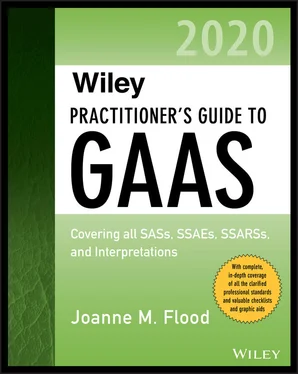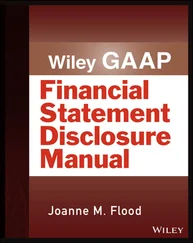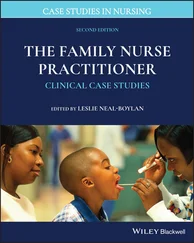1 1Acceptable reporting frameworks contain established accounting principles promulgated by a body designated by the Council of the AICPA under Rule 203 in the AICPA Code of Professional Conduct. These bodies include FASB, FASAB, IFRS, GASB, AICPA, and PCAOB.
2 2 In this chapter, references to management should be read as “management and, when appropriate, those charged with governance,” unless the context suggests otherwise. Those charged with governance are those “with responsibility for overseeing the strategic direction of the entity and obligations related to the accountability of the entity,” including the financial reporting process. (AU-C Glossary of Terms)
3 AU-C 220 Quality Control for an Engagement Conducted in Accordance with Generally Accepted Auditing Standards
Scope
Definitions of Terms
Objective of AU-C Section 220
Requirements
Quality Control Standards
System of Quality Control
Elements of Quality Control
Independence
Acceptance and Continuance of Client Relationships
Assignment of Engagement Teams
Direction, Supervision, and Performance
Engagement Performance
Documentation
AU-C 220 addresses:
Specific responsibilities of the auditor regarding quality control standards for an audit of financial statements
Responsibilities of the engagement quality control reviewer
Supervision of an audit
Quality control is the responsibility of the audit firm. (AU-C 220.01)
Source: AU-C 220.09.For definitions related to this standard, see Appendix A, “Definitions of Terms”: Engagement partner, Engagement quality control review, Engagement quality control reviewer, Engagement team, Firm, Monitoring, Network, Network firm, Partner, Personnel, Professional standards, Relevant ethical requirements, Staff, Suitably qualified external person.
OBJECTIVE OF AU-C SECTION 220
AU-C Section 220.08 states that:
The objective of the auditor is to implement quality control procedures at the engagement level that provide the auditor with reasonable assurance that
1 the audit complies with professional standards and applicable legal and regulatory requirements and
2 the auditor’s report issued is appropriate in the circumstances.
(AU-C Section 220.08)
REQUIREMENTS
Quality Control Standards
The engagement partner is responsible for the overall quality of the engagements to which the partner is assigned. An audit firm should establish a quality control system to provide it with reasonable assurance that its staff meets the requirements of professional standards and applicable legal and regulatory requirements and that reports are appropriate. (AU-C 220.03) The proper staff can make the difference between an effective, efficient audit and one that is wasteful and has poor results.
System of Quality Control
The nature and extent of a firm’s quality control policies and procedures depend on the following five factors:
1 Firm size and the number of its offices
2 The degree of autonomy of personnel and practice offices
3 The knowledge and experience of its personnel
4 The nature and complexity of the firm’s practice
5 The cost of developing and implementing quality control policies and procedures in relation to the benefits provided
(QC 20.04)
When a firm establishes quality control policies and procedures, it should do the following:
1 Assign responsibilities to qualified personnel to implement quality control policies and procedures.
2 Communicate quality control policies and procedures to personnel (see below).
3 Monitor the effectiveness of the quality control system. The purpose is to determine that policies and procedures and the methods of implementing and communicating them are still appropriate.
(QC 20.22–.23 and 20.20)
NOTE: Flaws in, or a violation of, a firm’s quality control do not necessarily indicate that an audit was not performed in accordance with GAAS.
Elements of Quality Control
When establishing its quality control policies and procedures, a firm should consider the elements of quality control:
Leadership responsibilities for quality
Ethical requirements
Acceptance and continuance of clients
Human resources
Engagement performance
Monitoring
(AU-C 220.A1)
NOTE: CPA firms or individuals who are enrolled in an AICPA-approved practice-monitoring program are obligated to adhere to quality control standards. In addition, the Principles of Professional Conduct indicate that members should practice in firms that have in place quality control procedures to provide reasonable assurance that services are competently delivered and adequately supervised. The Statements on Quality Control apply to a CPA firm’s accounting, auditing, and attest practices.
The engagement partner is responsible for the independence requirements for each audit and ensuring that these requirements are met. The engagement partner should:
Evaluate the threats to independence,
Evaluate any breaches, and
Take appropriate action to eliminate or reduce threats to an appropriate level. If that cannot be done, the firm may have to withdraw from the engagement.
(AU-C 220.13)
To be independent, auditors must be intellectually honest; to be recognized as independent, they must be free from any obligation to or interest in the client, its management, or its owners. For specific guidance, the auditor should look to AICPA and the state society codes of conduct and, if relevant, the requirements of the Securities and Exchange Commission (SEC) and the U.S. Department of Labor. (QC 20.FN6)
Acceptance and Continuance of Client Relationships
The engagement partner must be satisfied that appropriate procedures regarding acceptance and continuance of clients have been performed and that appropriate conclusions were reached. (AU-C 220.14)
Policies and procedures should provide reasonable assurance that the firm will not be associated with clients whose management lacks integrity. A firm should:
Undertake only engagements that can be completed with professional competence,
Consider the client’s integrity,
Ensure that ethical requirements can be met, and
Evaluate significant issues during current or previous audits and their implications for continuance.
(AU-C 220.A7)
If information comes to the engagement partner’s attention that would have caused the firm to decline the engagement, the partner should share that information with the firm so that the partner can take action. (AU-C 220.15)
Assignment of Engagement Teams
The engagement partner must be comfortable that the engagement team and external specialists are capable and have the appropriate competencies to perform the engagement and issue an appropriate report. (AU-C 220.16)
When evaluating the competence of the engagement team, the engagement partner may consider:
1 Understanding of and experience with audits of a similar nature
2 Understanding of professional standards
3 Understanding of regulatory requirements
4 Knowledge of relevant IT and specialized areas of accounting and auditing
5 The firm’s quality control policies and procedures
6 Ability to apply professional judgment
7 The industry environment
(AU-C 220.A10)
Personnel should have experience in similar engagements through training and participation. Policies and procedures should also provide reasonable assurance that personnel refer to authoritative literature and consult, on a timely basis, with appropriate individuals when dealing with complex, unusual, or unfamiliar issues.
Читать дальше












